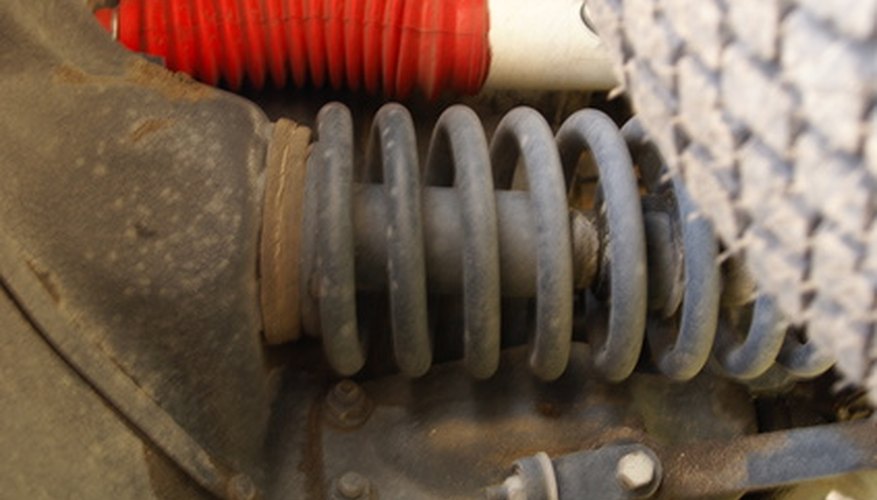A car's suspension is tuned for different purposes, from providing a smooth, comfortable daily driving experience, to offering tight, high-performance handling on a racetrack or twisty back-roads. Many drivers prefer a balance between the two. If you feel every small bump or imperfection in the road, then your car may have sport-tuned suspension components. You can try a couple of tricks to soften your ride before attempting to switch out some of the sport components for softer ones.
- A car's suspension is tuned for different purposes, from providing a smooth, comfortable daily driving experience, to offering tight, high-performance handling on a racetrack or twisty back-roads.
- If you feel every small bump or imperfection in the road, then your car may have sport-tuned suspension components.
Lower your tire pressure by a few psi. Tires with slightly lower pressure can absorb some bumps better than if they are inflated to the maximum or recommended pressure. Do not lower your tire pressure more than 5 psi below the recommended setting. Doing so may cause abnormal tire wear and put added stress on the tires.
Place cushions on your car seats. Though this will not lessen the vibrations through the pedals and steering wheel, you can experience greater comfort while driving if some of the bumps are absorbed through the cushions instead of your body.
Adjust the shocks, if you have adjustable shocks. Some sport suspensions systems, particularly aftermarket products, enable you to adjust the ride stiffness in the shocks. For specifics, consult the documentation for the shocks that your car uses.
- Place cushions on your car seats.
- Some sport suspensions systems, particularly aftermarket products, enable you to adjust the ride stiffness in the shocks.
Remove excess weight from your car. While unlikely that cargo is having a large impact on ride comfort, if you are carrying around a large amount of heavy cargo, you could be placing extra strain on the springs and shocks, reducing their amount of play.
Replace large wheels with smaller and more narrow ones. Large, wide wheels and tires tend to pick up and transmit bumps and potholes more strongly than small, narrow ones. This should be performed only by a qualified technician.
Install softer springs, shocks, struts and bushings. Any of these may be experimented with one at a time to determine which makes the biggest difference. While this is by far the most expensive solution, it's also the most likely produce noticeable results in creating a softer, more comfortable driving experience. However, softening the suspension system sacrifices handling and cornering performance. All of these modifications should be performed only by a qualified technician.
- Replace large wheels with smaller and more narrow ones.
- However, softening the suspension system sacrifices handling and cornering performance.
WARNING
Be careful when adjusting your car's tire pressure. Lowering the pressure by more than a few psi below the recommended pressure can result in abnormal tire wear and put added stress on the tires.
